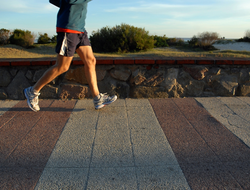Nutrition and physical activity support for your urinary tract
Published: September 13, 2019
Women are more likely to experience urinary tract malfunction and urinary tract infections than men. This is mostly due to differences in anatomy and biological function.
However, aging and lifestyle behaviour can influence bladder control in both men and women.
Urinary tract malfunction and/or infection can significantly impact quality of life by interfering with activities of daily living.
Urinary tract malfunction
The risk of incontinence increases with age and may be perceived as something that cannot be changed: a fact of life. However, this is not necessarily so.
In men incontinence is often associated with benign prostatic hyperplasia (BPH) where urine flow is interrupted by an enlarged prostate. Frequency and urgency to urinate increase which may result in incontinence.
Increased inflammation increases risk of prostate growth and greater collagen deposits in your bladder which make urination difficult
In women, incontinence occurs when pelvic floor muscles and sphincter muscles, which control outflow of urine from your bladder, cannot withstand the pressure of your bladder. Imbalance between bladder muscles and urine flow control muscles may result in urine leakage.
Women may also experience “overactive bladder” a condition in which abnormal nerve signals cause your bladder to contract which, coupled with weak pelvic floor and sphincter muscles, may result in urine leakage.
Paying attention to several lifestyle behaviours can help reduce your risk of developing incontinence....link to the full article to learn more.
References
1.
Hu et al. D-Mannose: Properties, production, and applications: An overview. 2016 comprehensive reviews in food science and food safety 15. 773-785
2.
Urinary tract infection definition http://www.mayoclinic.org/diseases-conditions/urinary-tract-infection/basics/definition/con-20037892
3.
Medical treatmenthttps://www.drugs.com/article/antibiotics-for-uti.html Anti biotics for UTI treatment
4.
Wikipedia. Alloxan https://en.wikipedia.org/wiki/Alloxan

